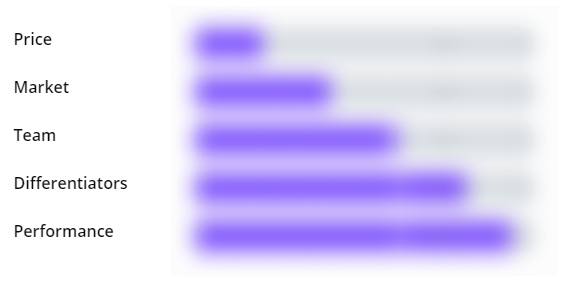Obi
Access all the major ridehails and taxis around the world in one app
Overview
Raised: $535,000
Rolling Commitments ($USD)
10/30/2021
$2,149
957
2014
Transportation, Automotive, Aviation, & Aerospace
AutomationTech
B2C
High
Low
Summary Profit and Loss Statement
| Most Recent Year | Prior Year | |
|---|---|---|
|
Revenue |
$0 |
$758 |
|
COGS |
$134 |
$3,637 |
|
Tax |
$0 |
$0 |
| ||
| ||
|
Net Income |
$-925,678 |
$-631,133 |
Summary Balance Sheet
| Most Recent Year | Prior Year | |
|---|---|---|
|
Cash |
$801,629 |
$308,457 |
|
Accounts Receivable |
$14,880 |
$0 |
|
Total Assets |
$832,629 |
$315,257 |
|
Short-Term Debt |
$60,575 |
$157,864 |
|
Long-Term Debt |
$0 |
$425,000 |
|
Total Liabilities |
$60,575 |
$582,864 |
Price per Share History
Note: Share prices shown in earlier rounds may not be indicative of any stock splits.
Valuation History
Revenue History
Note: Revenue data points reflect the latest of either the most recent fiscal year's financials, or updated revenues directly from the founder, at each raise's close date.
Employee History
Upgrade to gain access
-
$25 /month
billed annually - Free portfolio tracking, data-driven ratings, AI analysis and reports
- Plan Includes:
- Everything in Free, plus
- Company specific
KingsCrowd ratings and analyst reports
- Deal explorer and side-by-side comparison
- Startup exit and failure tracking
- Startup market filters and historical industry data
- Advanced company search ( with ratings)
- Get Edge Annual
Edge
Synopsis
Ride-hailing is no longer a new industry. Companies like Uber and Lyft have revolutionized the space by allowing anyone to pick somebody up or to deliver something for a nominal fee. This model decreases social friction and empowers individuals who previously had little or no access to transportation. The industry, though, is not without its problems. It is still fairly early in its adoption process and as such is fragmented in nature. Uber and Lyft account for the overwhelming majority of transportation in this space in the United States, but there are countless other ride-hailing competitors who are struggling to gain traction.
This degree of fragmentation presents an opportunity for riders and drivers alike. For drivers, the benefit is the ability to monetize their time and energy using multiple platforms. For riders, the benefit is the lower costs some platforms offer. However, realizing these benefits can come with a significant cost, especially for riders. Having several apps and plugging destinations into each one can be time consuming and frustrating.
One company looking to tackle this problem is Obi. Using its platform, riders can plug in their pickup and destination points, personalizing their ride types based on a wide range of criteria. The app then uses this data to get time and price estimates from the more than 300 ride-hail companies with which it is integrated. In addition to saving riders money, the platform has been successful in increasing business for smaller players in the space. In New York City, for instance, 20% of users on its app ended up booking with Curb — a significant figure given Curb’s nearly 0% market share in the city. Another competitor, Via, saw its share rise from 4% to 20%. These changes came at the expense of Uber, which saw its share of the market drop from 68% conventionally to 23% when booking with Obi. Bigger players can also benefit, considering Lyft’s market share grew from 28% conventionally to 33% on Obi’s platform.
At present, Obi intends to generate revenue by charging a fee of 10% from ride-hail providers. In the future, the company will have other ways to grow revenue, including targeted advertisements, selling data, and technology licensing and subscription products. However, specifics have not been offered as to how these activities would work.
Obi’s current Republic raise has been rated a Neutral Deal by the KingsCrowd investment team.
Price
Obi is raising capital through a SAFE that will convert subject to a $19.5 million valuation cap. Unlike most SAFEs, though, investors will not receive a discount upon conversion. Truth be told, this valuation is awfully steep, especially when you consider the company’s traction and the low amount of revenue it has generated so far. Because of this, Obi’s price score is its lowest across all five metrics.
Market
The market that Obi operates in is vast and quickly growing. According to one source, the global market for ride hailing in 2018 was valued at $61.3 billion. The expectation is for it to continue to grow at a rate of 19.87% per annum, climbing to $218 billion by 2028. Another source sees the industry growing from $182.12 billion in 2018 to $212.60 billion in 2026. In that case, the annualized growth rate is just 2%, but the ending point in the near future is about the same as the other source.
This growth is occurring all across the globe, not just in the US. For instance, in January of 2021, Uber had a roughly 68% market share in the US and Lyft controlled substantially the rest of the industry here. However, globally there were 207.38 million ride-hail users in 2015. By this year, that figure is expected to hit 539.49 million. The 2021 figure implies a year-over-year growth rate of 7.9%, which is significantly greater than global population or GDP growth. It’s also indicative of an industry still in its early phases.
At this point in time, it is impossible to know all of the different revenue opportunities for Obi. However, because of its business model, the market opportunity should be around 10% of the overall global revenue opportunity for ride-hail booking alone. According to our sources, this implies a total possible market size on its booking system alone of $20 billion or more annually. Given all of the characteristics of the space, Obi’s market score is quite strong.
Team
One of the weaker areas for Obi is its team. The founder of the business and its CEO is Payam Safa. Prior to founding Obi, Safa was the co-founder of Possibility School, an organization focused on developing growth mindsets for children. Also in the past, he founded and was the CEO of Bellhop. That business initially focused on developing a hotel concierge platform and ultimately turned into Obi today. Another company that Safa founded and served as the CEO of was Chanelink, a firm focused on online distribution automation for hotels. Before that, Safa was the co-founder of the technology and marketing operations of Batiqa Hotels. Other prior roles included working as a consultant at Accenture and as a software engineer at Northrop Grumman. With the exception of leadership and software skills, little to none of his experience relates much to Obi. However, he does bring ample entrepreneurial experience to the company.
The next person in line at Obi is Ji Young Choi. She currently serves as Obi’s COO. In the past, Choi founded and was the CEO of JYC Group, which provided consulting services to startups looking to become more organized and to Fortune 500 companies looking to be nimbler. She also served as the co-founder and COO of Teckst. That company operated as a B2B SaaS platform that allowed consumers to communicate with businesses via text message. Choi also served as the chief eating officer at Dinary and focused on enterprise execution at General Assembly, which turned thinkers into content creators before being sold for $413 million. Before that, she was a senior strategy consultant at Booz Allen Hamilton. These experiences demonstrate some degree of skill with technology and leadership. They are also varied enough that they would give an indication of Choi’s ability to adapt to different industries.
Taking all of the data from these two individuals into consideration, the team score for Obi is slightly below average. There is not a clear indication of significant software experience, and the company is missing a CTO. Those are negative factors working against it.
Differentiators
At present, there are other ride-hail aggregators in the market. Google Maps, Transit, and Citymapper all provide some information about ride-hail services. However, they largely focus on the biggest ride-hailing companies out there and as a result, miss many of the small ones. Transit and Citymapper also focus on different modes of transportation, including public transportation, walking, and more. Migo also provides this diversified approach, but when it comes to ride-hailing, it overlooks the big players like Uber and Lyft. In short, Obi’s differentiators are that it is currently only focused on the ride-hailing market, and it purports to feature over 300 players, big and small. We say “currently,” though, because management has indicated an interest in expanding to other modes of transportation, such as bicycles and scooters. Given Obi’s current place in the market, it scored strongly in the differentiators metric. However, investors should note that the company does not have much in the way of defensibility. If Obi’s model proves successful, a better-funded competitor could choose to replicate it and steal Obi’s users through brand name awareness.
Performance
Performance is a tricky thing when evaluating Obi. On the one hand, the business is doing very well — while on the other, it has a lot of progress that needs to be made. Take revenue. In 2018, the business generated just $758 in revenue. This dropped to nothing in 2019 and stayed that way in 2020. The company generated a net loss in 2018 of $631,133, and in 2019, its net loss was $925,678. Operating cash outflows were $622,685 in 2018 and $887,385 in 2019. No profitability figures were provided for 2020.
On the other hand, there are some areas in which the company has shown attractive traction. It has more than 130,000 users on its platform who have collectively booked more than 235,000 trips. Obi also has more than 300 ride-hailing companies integrated into its platform, and it has seen $3.8 million worth of booking volume. This traction shows that demand does exist for its product, but only time will tell when it will be able to monetize this. Balancing the company’s poor financial history with its strong user traction, Obi earned an above average performance score.
Bearish Outlook
On the bearish side of things, there are some concerns that need addressing. First and foremost is the high valuation Obi is asking investors to accept. Frankly, the price target is very lofty. The fact that the business has yet to generate revenue is discouraging, and net losses have been sizable in nature. The company’s team could be stronger, and there’s no denying that competition from platforms such as Google Maps and Transit does exist.
Bullish Outlook
On the bullish side of the equation, though, there’s also plenty for investors to appreciate. The market the company operates in is large and growing rapidly, providing ample growing room for Obi. The product is at least slightly differentiated compared to its peers, and performance on the basis of getting users and having them book rides is stellar.
Executive Summary
Bringing everything together, it appears that Obi is a fairly balanced business on a risk/reward basis. The company certainly has demonstrated it has potential in the long run, and so long as management can prove the monetization of the platform, its future could be very bright. In all, this balance between the risk and reward has netted Obi its rating as a Neutral Deal at this time.
For questions regarding the KingsCrowd staff pick or ratings for this company, please reach out to support@kingscrowd.com.
Analysis written by Daniel Jones.


